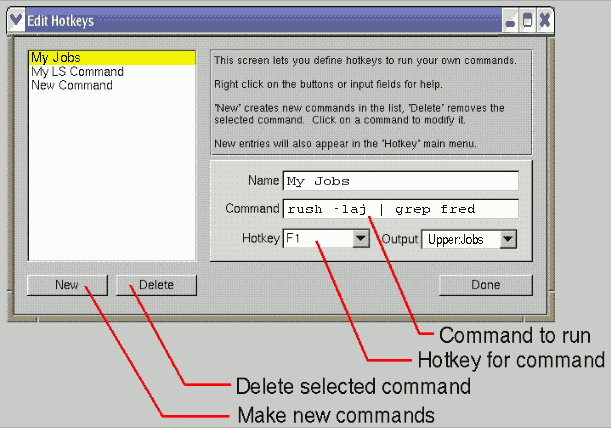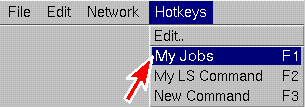|
You can set up the function keys on your keyboard to invoke
your own custom commands from within irush. For instance,
to invoke a submit script with a single keypress, or easily
view an animation sequence.
1) Open the Hotkeys editor from the irush main menu:

This will bring up the following screen:

2) Hit 'New' to define a new command.
3) Enter the command to run in the 'Command' field
4) In the "Hotkey" field, choose a function key to assign the command
5) Enter a 'Name' for this command [optional]
6) Choose which "Output" window the command will be sent to.
7) Hit 'Done'. That's it!
Now, when you're in irush, just hit that function key to invoke your command.
You can set up several commands, one for each function key. Irush will remember
them, even when you exit. The commands you define will also appear in the irush
'Hotkeys' menu, so you can invoke them from there too, without using the function key:

By default, your command's output will be sent to the 'Lower' gray irush
terminal screen (Output: Lower), but you can change it to use eg.
'Upper:Jobs' (shown above) which will use the upper "white" irush screen,
showing the "Job Controls" at the left, allowing the user to highlight your
report, and do 'Job' operations on it.
Be sure your report format matches the controls you select for the "Output:"
field; if you choose "Upper:Jobs", your report must have the same columnar
format as the regular "Jobs" report.
| 
